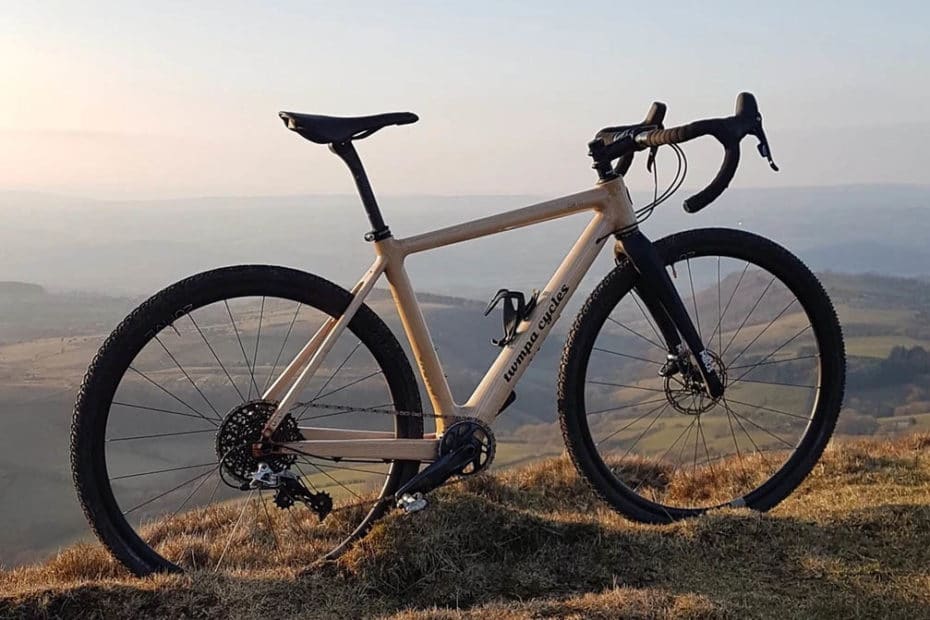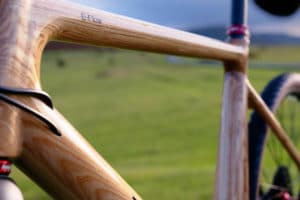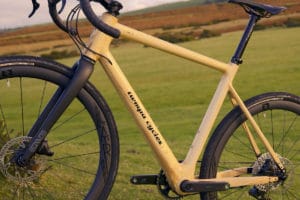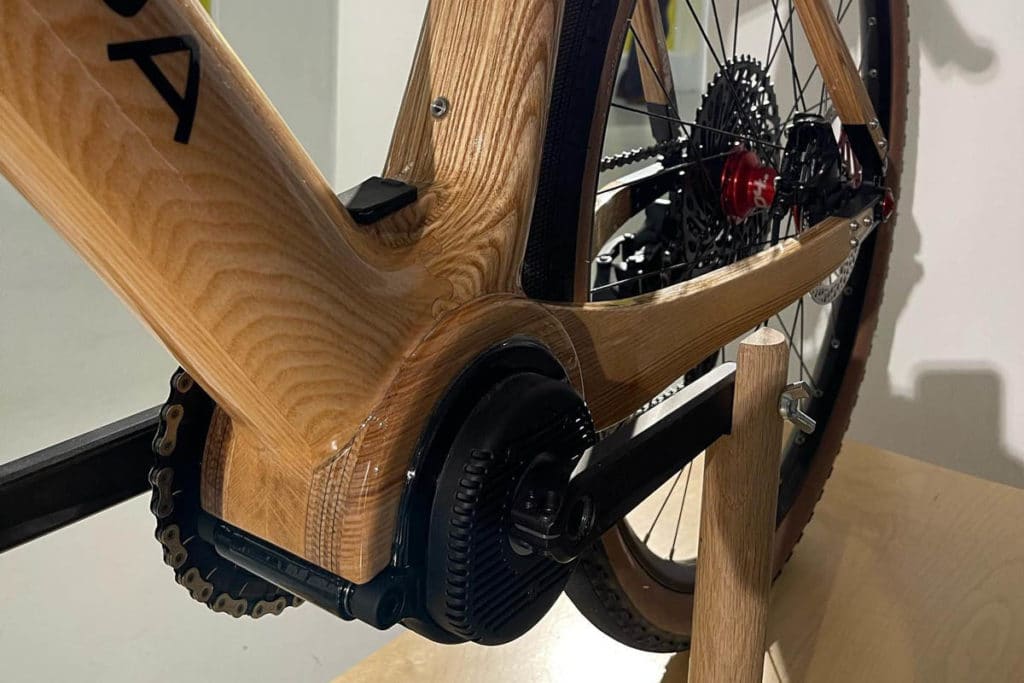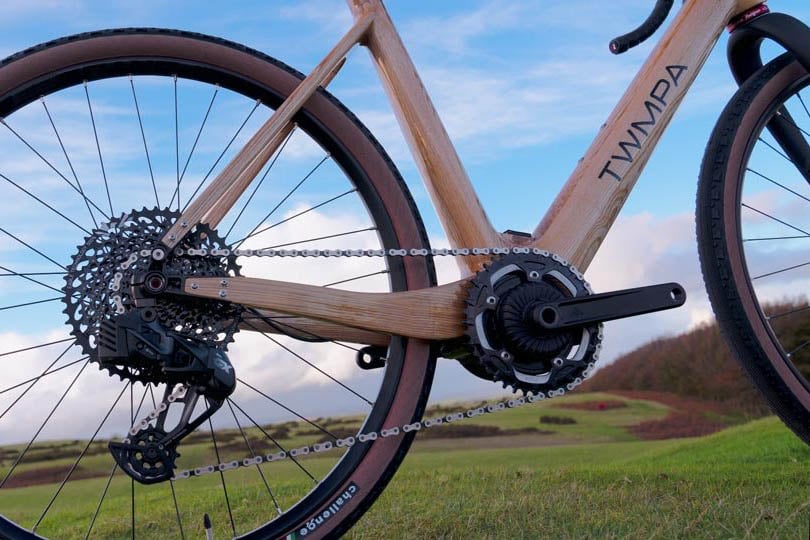A good year has passed since we first reported on the start-up Freeflow Technologies from Scotland. In the meantime, they seem to have made good progress with the further development of their drive system. In any case, the first partnership with a bicycle manufacturer was presented at the “Rouleur Live” bicycle fair in London at the beginning of the month.
For their premiere, a gravel ebike called Twmpa E-Flow, FreeFlow Technologies have teamed up with the manufacturer Twmpa Cycles from Hay-on-Wye in Wales. Hardly any of you will probably know this company. One reason for this is that Twmpa can also easily count as newcomers on the market. Their first bike, the Twmpa GR 1.0, has been in production for just one year.
So, although neither partner is a big name in the bike industry yet, they could attract a lot of attention in the near future. After all, their joint venture, the Twmpa E-Flow, is a remarkable bike in many respects.
Cells with special qualities
This is largely due to its frame. It is made of a very unusual material for such purposes – namely wood. Apart from the dropouts and small inserts in the seat tube and head tube, tubes made of the finest ash give the E-Flow its shape.
In an interview with the British cycling magazine Global Cycle Network, Twmpa founder and designer Andrew Dix explains that its special cell structure makes this wood ideally suited as a point of departure for a bicycle. It has microstructures that resemble a combination of spring and damper. From the ground up, a frame made of ash wood has microscopically small suspension systems, so to speak. Together with a suitable geometry, a high-quality gravel bike could be built.
More volume for more safety
This is exactly what Twmpa Cycles has already done in 2019 and launched the GR 1.0. The recently presented E-Flow is based on this bike. Accordingly, the manufacturer has plenty of experience in working with the material.
Due to its damping properties, the E-Flow promises a lot of riding comfort. However, you don’t need to worry about stability and reliability either. According to Andrew Dix, ash in addition is characterised by a good strength-to-weight ratio. For frame construction, this enables the realisation of greater wall thicknesses and larger tube diameters. Despite the larger volume, the frame does not become too heavy. In the end, it weighs about 1,800 grams. For this type of bicycle, this corresponds to the weight of a high-quality steel frame. Of course, the wall thicknesses, for example, differ markedly. Between five and six millimetres of ash are set against around 0.5 to 0.8 millimetres of steel.
Computer instead of craftsman
Just how ambitious the plans of Twmpa and FreeFlow Technologies are can be seen, for example, in the fact that frame production is not carried out by hand. Instead, production is computer-controlled. A CNC milling machine cuts the respective frame parts from the planks. The tubes are manufactured as half-tubes and then bonded together. The connection between individual frame parts such as the head tube and the top tube is provided by gearing, whereby the teeth are considerably rounded. At present, production is geared to a number of about 30 frames per year. According to Miguel Ferros, co-founder of Twmpa Cycles, this could easily be scaled up if necessary.
Minimalist approach
The second remarkable detail of Twmpa’s E-Flow is, of course, the drive system. Officially, the system from FreeFlow Technologies can only be found on this e-gravel bike so far. As part of the minimal assist bike category, it has recently received further competition alongside Fazua and Mahle with the introduction of the Maxon Bikedrive Air and the HPS Watt Assist.
- Close-up of the integration of the FreeFlow Technologies motor
- Equipped with single-speed drives from Sram
Like most of its competitors, FreeFlow Technologies also relies on a mid-mounted motor in combination with a rather small battery. On the E-Flow, the energy storage unit is permanently installed in the lower part of the down tube. Theoretically, there would also be the option of a removable version. Given the wooden frame, Twmpa probably opted for the permanently integrated version.
Special case ebike
When it comes to integrating the motor into the frame, Twmpa deviates from its tried and tested solution. Normally, a titanium housing accommodates the bottom bracket in the frame. On the E-Flow, the motor is enclosed by the bottom bracket itself. The bottom bracket is designed as a kind of container consisting of two halves. They can be joined together and accommodate the motor in their centre. Experts talk about a clamshell design at this point. According to Twmpa, this design additionally allows the motor to be dropped out fairly easily. Once this is done, the battery can be changed as well.
Andrew Dix of Twmpa is certainly enthusiastic about the e-gravelbike as a final result. “We build frames from wood because we believe that it, and especially Ash, is the best frame material for all-road riding and bikepacking. So, in building a gravel eBike, we wanted a transmission that would combine controllable power delivery and good battery life without changing the nature of our bikes. In FreeFlow, we have found that.”
Key data of the drive from FreeFlow Technologies:
- Motor type: mid-mounted motor
- Power: 250 watts in continuous operation, power peaks up to 290 watts
- Speed limit of assistance: 25 km/h
- Torque: adjustable within certain limits depending on the application
- Weight: from 2.5 kg to 3.5 kg
- Battery: 252 Wh or 387 Wh
- Weight of battery: 1.5 kg or 2.5 kg
- Range extender: optional, in the form of a drinking bottle
Pictures: Twmpa Cycles; FreeFlow Technologies
